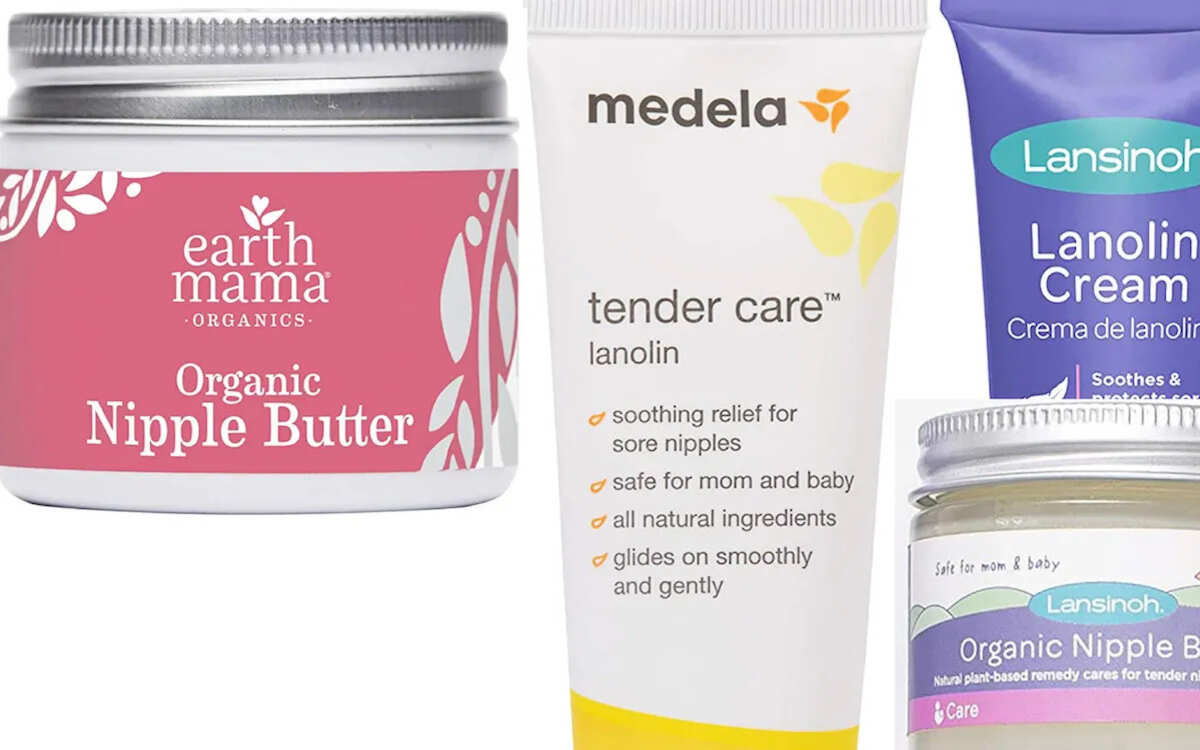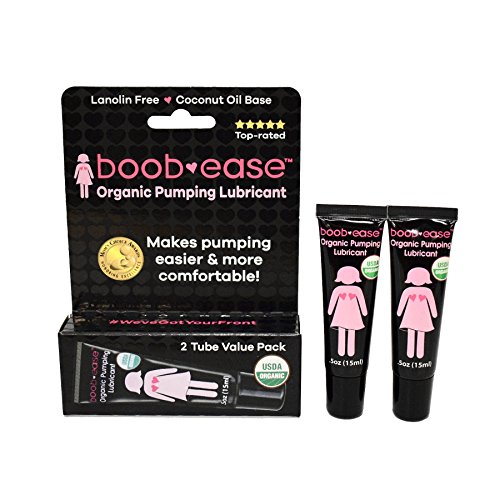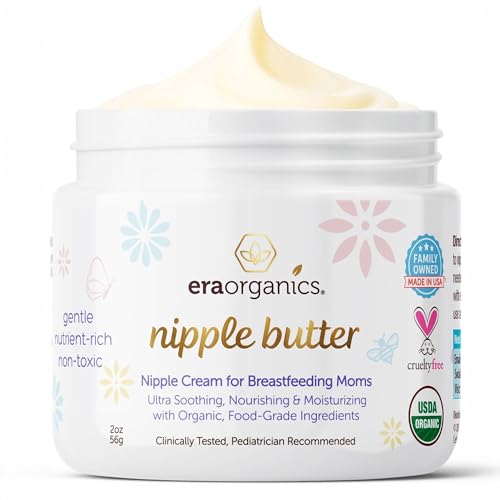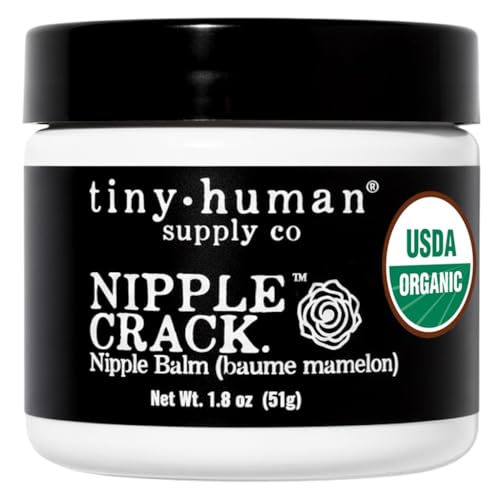Breastfeeding can be a beautiful bonding experience between a mother and her baby, but it’s not always a comfortable one. Many nursing mothers experience sore, cracked, or painful nipples, which can make breastfeeding a real challenge. That’s where nipple creams come in! A high-quality nipple cream can help soothe and heal sore nipples (1).
The American Academy of Pediatrics recommends using medical-grade, purified lanolin for nipple care, but there are plenty of other options available as well (2). From olive oil to coconut oil to shea butter, there are many different types of nipple creams on the market, each with its own unique benefits.
To help you find the best nipple cream for your needs, we’ve compiled a list of top-rated products.
Our Top Picks
- Best Nipple Cream For Breastfeeding: Lansinoh Lanolin Nipple Cream
- Best Budget-Friendly Nipple Cream: Medela Purelan Lanolin Nipple Cream
- Best Nipple Cream Without Lanolin: The Honest Company Calm Your Nip Balm
- Best Natural Nipple Cream: Motherlove Nipple Cream
- Best Organic Nipple Cream: Earth Mama Organic Nipple Butter Breastfeeding Cream
- Best Nipple Cream For Pumping: Bamboobies Pump Lubricant and Nipple Cream
- Best Nipple Cream For Sensitive Skin: Era Organics Soothing Nipple Cream
- Best Nipple Cream For Cracked Nipples: Tiny Human Organic Nipple Cream
In This Article
HappyBabyHub’s Best Nipple Creams For Breastfeeding Picks
Lansinoh Lanolin Nipple Cream – Best Nipple Cream For Breastfeeding
- Easy to apply
- Very compact so you can take it with you everywhere
- Really does help with sore nipples
- Heals the blisters
- You have to reapply after each meal
These tubes are packed with a whopping 1.41 ounces (or 40 grams) of pure lanolin. This nourishing cream is perfect for use on dry skin during feeding and can be applied to the entire nipple area. Here’s a pro-tip: you can soften a pea-sized amount of the cream between your fingers before application.
It’s best to apply this lanolin-based nipple lotion before bathing. This way, you can protect your nipples from the harmful effects of water and other irritants. If you’re a breastfeeding mother looking to relieve painful nipples, using this nipple cream may be just what you need.
What’s more, this nipple cream is free from parabens, flavors, fragrances, or preservatives. You don’t even need to remove the lanolin before nursing, as it is 100% natural and pure.
Medela Purelan Lanolin Nipple Cream – Best Budget-Friendly Nipple Cream
- Easy to apply
- Very soothing
- Great for diaper rash as well
- Scent-free
- This is not pure lanolin
This remarkable cream from Medela works by forming a protective layer on the surface of the skin, while being deeply absorbed to restore the skin’s natural moisture balance. And get this – the lanolin in this cream is produced responsibly, using wool sourced from responsible farms.
But that’s not all. Purelan Lanolin Cream has undergone rigorous testing to ensure that it meets the highest standards of purification. And here’s a fun fact: this amazing cream can hold more than double its weight in water when absorbed into the skin, mimicking the skin’s natural ability to retain moisture and naturally assisting in skin rehydration.
The Honest Company Calm Your Nip Balm – Best Nipple Cream Without Lanolin
- Has coconut oil high on the ingredients list
- Super soothing
- It’s very easy to use
- The tube lasts a long time
- It does separate sometimes (so you’ll go to squeeze some out and just get oil instead of cream.
You may be on the lookout for a natural and organic solution to soothe your dry or chapped nipples. Well, look no further! Nipple balms that feature omega-rich ingredients like coconut oil and shea butter can provide your breasts with the soothing comfort they deserve.
This amazing nipple cream is made with a nutritious combination of natural substances, designed to offer relief to those who are experiencing dry or chapped nipples.
This incredible cream is made with natural ingredients like shea butter, coconut oil, and beeswax. And what’s more, the ingredients used to make this nipple balm are all free of aroma, including petrolatum, lanolin, silicones, PEGs, phthalates, and artificial fragrances.
Motherlove Nipple Cream – Best Natural Nipple Cream
- Moisturizing & soothing
- Easy to apply – no warming required
- Light/no smell
- Doesn’t stain
- A bit pricey compared to other brands
This cream is completely odorless and free of lanolin, making it the ideal product for moms who want to avoid any unnecessary scents or additives. And here’s the best part – there’s no need to remove it before nursing, so you can continue to feed your little one without any interruptions caused by sore nipples. This amazing cream also helps to hydrate dry skin, lips, and cuticles, as well as ease aching nipples during pregnancy.
Earth Mama Organic Nipple Butter Breastfeeding Cream – Best Organic Nipple Cream
- The soothing organic formula that is safe for mom and baby
- Gentle cocoa butter smell (pro for me, might be a con for others)
- Works great at relieving soreness and preventing chapped nipples
- Non-greasy consistency
- Not as thick
The nourishing blend of herbs and oils in this butter has been used for centuries to calm and hydrate sore nipples. Plus, it’s USDA-Certified Organic, so you know it’s safe and free of harmful chemicals.
You don’t have to worry about washing it off before nursing because it’s lanolin-free and doesn’t contain any petroleum or preservatives. This calendula cream is perfect for soothing your nipples before and after nursing or pumping, but did you know you can also use it on other parts of your body? Use it on your lips, cuticles, or any dry skin that needs some extra TLC.
Bamboobies Pump Lubricant and Nipple Cream – Best Nipple Cream For Pumping
- Help lubricate nipples for pumping
- You need a very small amount to get the job done
- Works great with pump flanges
- Doesn’t stain as much
- A little liquidy
Organic pumping lubricants can make a world of difference when it comes to making pumping less of a hassle. This particular pumping lubricant is made with a base of nourishing coconut oil and is 100 percent certified organic, so you can feel good about what you’re putting on your skin.
Using a lubricant for pumping can help reduce friction and make pumping more comfortable, which is why it’s often recommended by lactation specialists. These handy lubricant tubes are compact and easy to use, so you can keep one at home and one in your pumping bag for convenience.
Era Organics Soothing Nipple Cream – Best Nipple Cream For Sensitive Skin
- Super soothing
- No offensive or perfumes scent
- A little bit goes a long way
- Organic ingredients
- There are little bead-like pieces of the butter
This USDA Organic nipple cream is packed with nutrient-rich ingredients to soothe and hydrate your skin. Not only is it perfect for nursing mothers, but it can also help prevent chafing under clothing and hydrate other problem areas like cracked heels, blisters, and dry patches.
This all-natural cream is free of harmful substances like lanolin, parabens, alcohol, mineral oil, petroleum, and fragrances. Instead, it’s loaded with hypoallergenic ingredients like sunflower oil, cocoa butter, apricot oil, arrowroot powder, chamomile extract, and calendula oil. Making this perfect if you have sensitive skin.
Tiny Human Organic Nipple Cream – Best Nipple Cream For Cracked Nipples
- Good for cracked nipples
- Really helps relieve breastfeeding pain
- Does not make a big mess
- You don’t have to wipe it off before breastfeeding again
- Not instant relief
When it comes to taking care of your nipples, you want a product that is not only effective but also easy to use. This organic nipple balm is made with high-quality ingredients that have no taste or odor, so you don’t need to worry about washing it off before nursing.
It provides instant relief for cracked nipples, leaving them soothed and protected. Plus, its thin consistency makes it easy to apply without leaving any oily or sticky residue, which can stain your clothing or clog your pump.
How To Choose The Best Nipple Cream?
- Ingredients: Options that are natural and organic are always a smart choice because a nursing infant could consume the residues of the product. Medical-grade lanolin preparations are advised by the American Academy of Pediatrics (AAP) to relieve painful nipples. Petroleum, parabens, mineral oil, and triethanolamine are other dangerous substances to watch out for.
- Texture: Some nipple creams can be more challenging to apply and may not be as comforting on your breasts since they are thicker or have a gritty feel. Additionally, oil stains from nipple creams might appear on your clothes and bras.
- Smell: The fragrances don’t improve breastfeeding, and a baby who is sensitive to scent may even stop taking a feeding as a result. Your best option is a simple, odorless nipple cream.
- Consistency: More pain is the last thing you need, so you’ll want a product that applies smoothly. Applying thick, gooey lotions may be challenging, and some of them could rub off and leave a greasy residue on your nursing bra.
What Is Nipple Cream?
Around 80-90% of women experience some type of pain while breastfeeding (3). A nipple cream is a kind of moisturizer that is intended to hydrate and safeguard the fragile skin surrounding the nipples. For relief from dryness, chafing, and broken skin, apply nipple cream. It’s crucial to pick a nipple cream that is hypoallergenic and devoid of harsh chemicals, perfumes, and colors.
Nipple creams differ from one another in terms of consistency. While some are thick like balm, others have a more smooth touch. Nipple creams frequently contain lanolin and other naturally occurring moisturizing components like coconut, cocoa, or shea butter, olive or coconut oils, or both.
Do I Need Nipple Cream For Breastfeeding?
Your nipples will likely go through a lot while you learn how to nurse your infant. Until your baby’s latch settles and your nipples adjust, a nipple cream can assist in relieving your pain. However, since some mothers don’t feel any discomfort and others don’t nurse, not every mother needs nipple cream. Cracked and bleeding nipples don’t have to be the end of your nursing experience; they can be controlled with the correct support. Finding the best nipple cream for your requirements may need some trial and error.
How Often Should I Use Nipple Cream?
When applying nipple cream, it’s a good idea to apply some after each feeding. This allows the cream to soak and become ready for subsequent feeding. It is preferable to cease using the cream after the nipples have healed and become accustomed to their new role because applying more cream than is necessary will irritate the skin even more.
Can I Use Nipple Cream During Pregnancy?
Yes, since your body experiences a number of hormonal changes while you are pregnant. Your nipples may feel dry, chapped, and itchy as a result of these changes. Before your baby is born, use nipple creams to help prevent injury to your nipples and your nipples will stay supple and soft as a result.
Can You Use Nipple Cream On Your Lips?
Absolutely, you can apply nipple cream to your lips. The cream can help soothe your lips and also prevent chapping and dryness.









